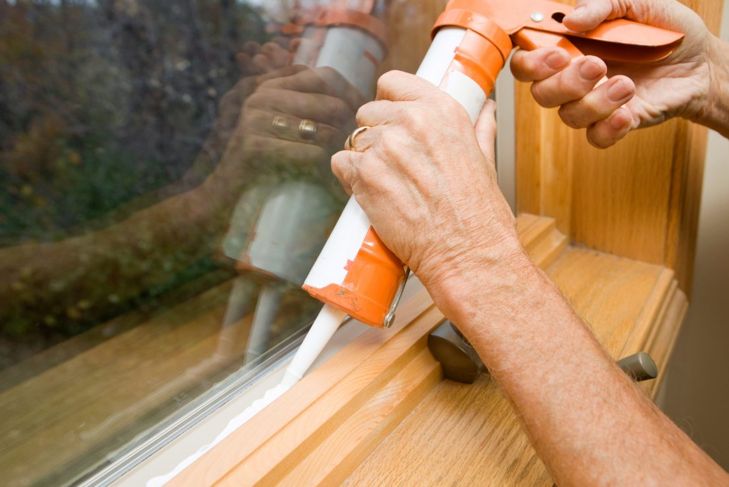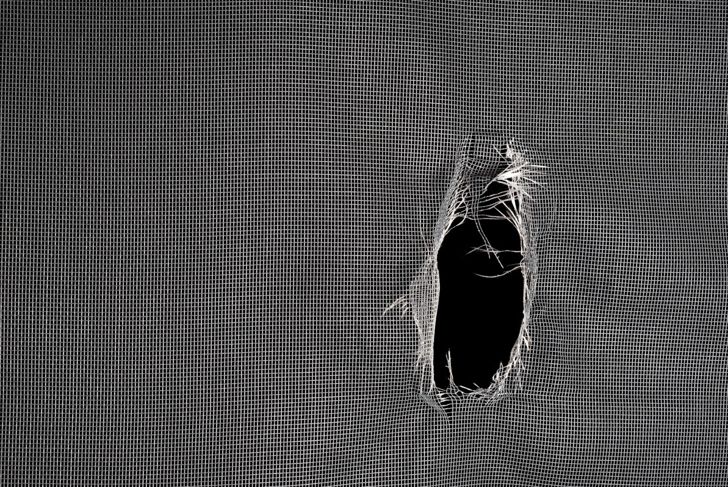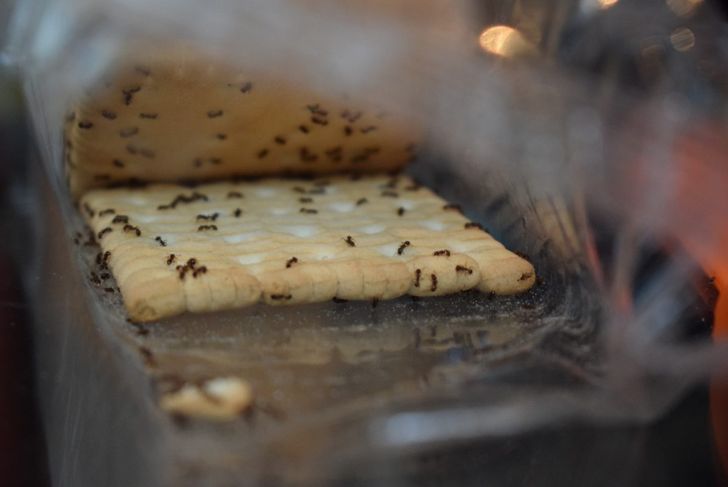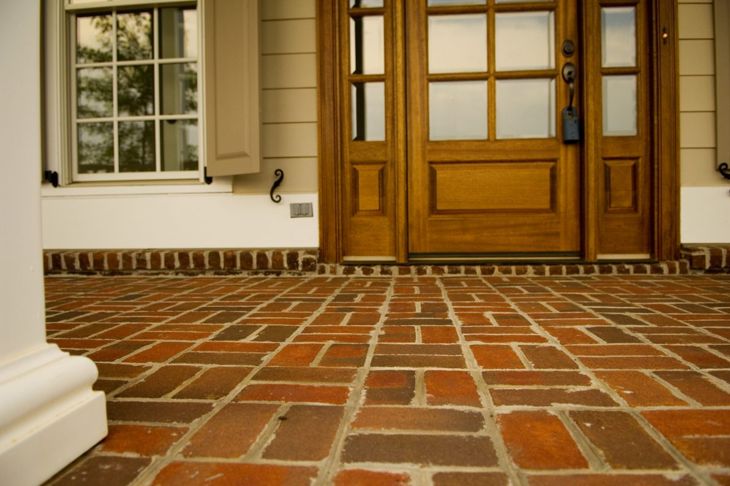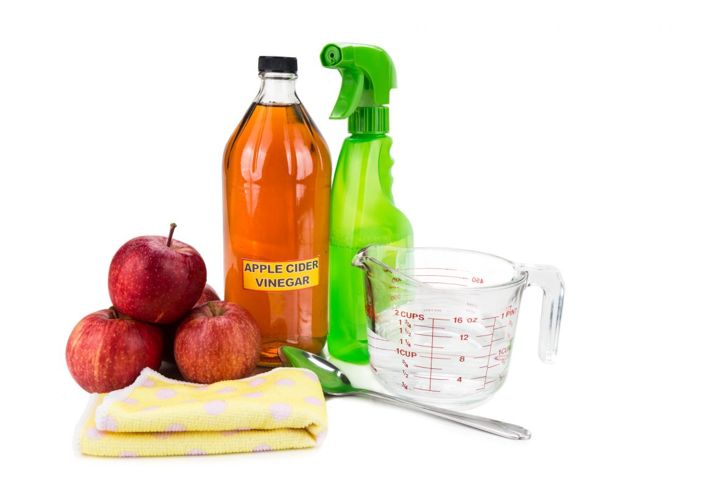Surprisingly, most of the bugs crawling or flying around are beneficial to humans or, at the very least, not harmful. Still, that doesn’t mean we want them hanging out inside our homes. Pests can gain entry through the smallest of openings, and people unknowingly invite them in through normal, day-to-day practices. Keeping surfaces clean and free of food debris goes a long way to prevent insects. But there are also a variety of options both indoors and out that don’t include harmful pesticides or a significant investment.
Caulk cracks around windows and doors
Obviously, keeping pests out is the first step in creating a pest-free home. Start by purchasing a quality caulk gun with a back-off trigger. Clean the area you plan to caulk, including removing any old sealant. Caulk cracks around windows, fascia boards, and doors, then smooth the applied caulk with your finger or a damp rag. Latex caulks are easy to clean up and paintable. Silicone caulk is available in clear versions that don’t show. Larger cracks may require a stronger material, such as concrete or mortar. Or, use copper mesh to plug the hole, then seal over it with foam sealant.
Repair or replace torn screens
Gnats, flies, and mosquitoes gain entry through tears in window and door screens. And some insects, like leafhoppers and psyllids or plant lice, are small enough to fit through standard-size mesh window screens. Check your screens regularly for damage. If you’re a DIYer and have the tools on hand, you can repair the screens yourself. You’ll find replacement screening mesh and tools at local hardware or home improvement stores. Or, contact a handyman or door and window screen service to make the needed repairs.
Keep pet food areas clean
The areas where we feed our pets attract not only insects but rodents as well. These home invaders seek food sources that are easily accessible. Pets often leave food on the ground around their feeding bowls, which attracts all kinds of pests. Clean up any spilled food right away. You can also try using elevated dog bowls to keep the food off the floor. Store dry dog food in a closed container with a tight-fitting lid to keep unwanted critters from munching on your pet’s dinner supply.
Store dry foods in airtight storage containers
Pantries and other food storage areas are prime attractions for insects and rodents. Plastic or paper bags might not keep pests out. Store foods in containers with tight-fitting lids. Keep the shelves and bins you use clean and free of food traces. Vacuum the corners and crevices of food storage areas, including drawers and cabinets. If you discover an infestation, throw the food away and clean the area thoroughly. Continue to keep an eye out for pests in the infested area, as they can live for weeks without food.
Trim limbs and shrubs
Regularly mowing your lawn and trimming back vegetation goes a long way in preventing ants and other pests from entering your home. Tree limbs and shrubs provide easy access to your home’s exterior. Insects will then seek entry through even the smallest of cracks or crevices. Plant hedges and shrubs at least three feet from windows or exterior walls. Trim limbs and vegetation so there is at least two feet of space between the plants and your home.
Install thresholds at the base of exterior doors
If you can see light coming inside from underneath your exterior doors, chances are, bugs are entering your home through the gap. Spiders and smaller insects can squeeze through a 1/16-inch gap. Mice can enter your home through spaces that are about ¼-inch wide. Installing or replacing the threshold and weatherstripping will help prevent unwanted insect entry. These simple tasks will improve your home’s energy efficiency, as well.
Repair leaky pipes and seal around utility openings
Leaky pipes provide a water source for thirsty pests. Plus, water can weaken and damage the walls or flooring, making it easier for pests to tunnel into your home. Check for leaks or pools of standing water under sinks and around toilets. Seal around the entry points for pipes and wiring that run into your home from outside. Gaps around outdoor faucets are also common entry points. Use a sealant to close them up. Check the outside component of your dryer vent for cracks. Replace if needed and seal around the edges.
Store firewood away from your home
Storing firewood inside your home or in your basement or garage is never a good idea. Not only does it provide an excellent home for rodents, but it attracts pesky insects as well. Stacking firewood against an exterior wall attracts wood-boring insects that can tunnel indoors. Store firewood at least three feet away from your house or other structure. Use grates, bricks, or concrete blocks to prevent the wood from coming into contact with the ground. Moist wood attracts bugs. Inspect the wood for insects before bringing it inside to use on a fire.
Make a natural bug deterrent
Homemade bug sprays can be an effective deterrent. Mix a batch of 50% apple cider vinegar and 50% water in a spray bottle. Spray the vinegar mixture around the perimeter of your home, on screens, or on dining chairs and table legs to keep ants away. Some people also find success deterring ants with cayenne pepper, and essential oils can also serve as natural bug repellants. Try soaking cotton balls in peppermint oil and placing them in areas where you’ve seen insects. If you prefer a spray, mix 10 drops of the oil with 16 ounces of water. Spiders, aphids, fleas, flies, lice, moths, and even mice aren’t fond of the smell and will stay away.
Use catnip to deter roaches
A study from the University of Iowa found catnip to be an excellent roach repellent. It contains nepetalactone, an organic compound that’s safe for both humans and their pets, but deters roaches. A study at Virginia Tech found that catnip also contains other insect-repelling compounds such as citronella, geraniol, carvacrol, and pulegone. Research suggests that catnip also keeps away ants, mosquitoes, aphids, and beetles. Plant catnip in containers or in your garden to repel these pests. Or, make a strong tea and spray near possible insect entry points.

 Home
Home Health
Health Diet & Nutrition
Diet & Nutrition Living Well
Living Well More
More